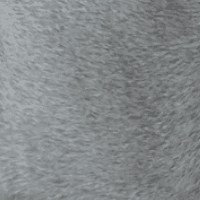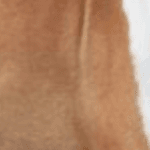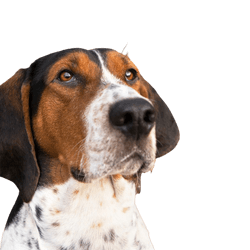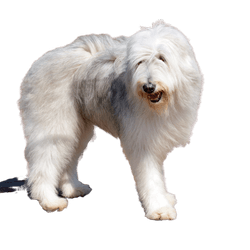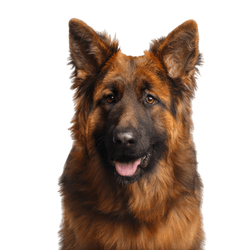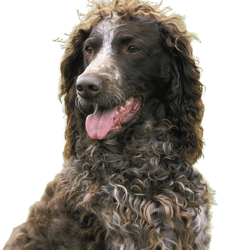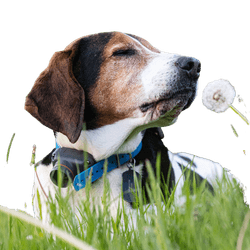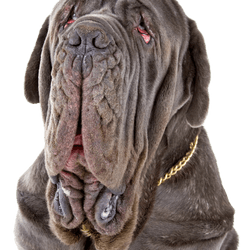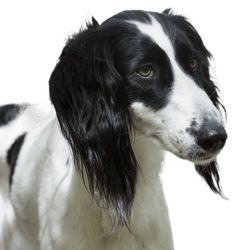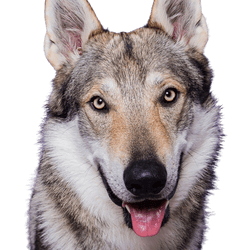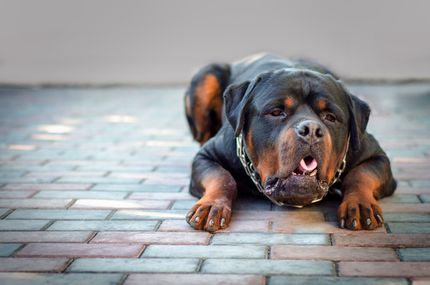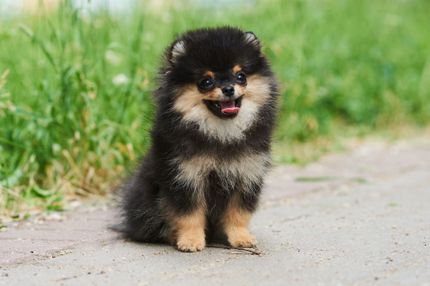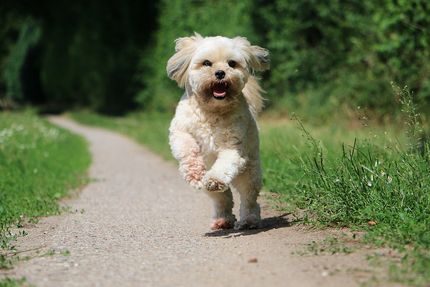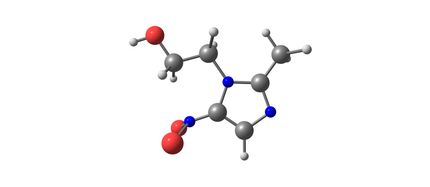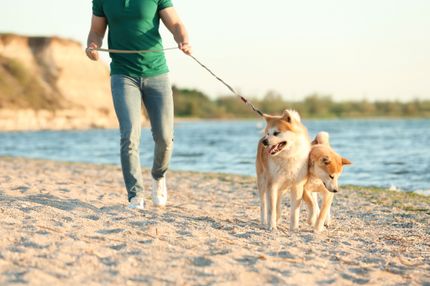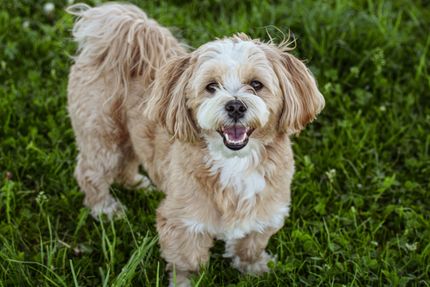Facts & Origin
Origin and history of the Doberman
The Doberman inherits its name from the first breeder of this breed, a municipal dog catcher and tax collector from Germany: Friedrich Louis Dobermann crossed particularly sharp dogs in the 19th century, with which he wanted to protect himself. Particularly worth mentioning here are the "butcher dogs", which at that time were already almost a specially recognized breed and can be assumed to be the forerunners of the Rottweiler, paired with shepherd dogs.
The aim of his breeding were watchful working dogs, which were excellent for the protection of farm and house. Due to their characteristics, they were used as herding and police dogs (the latter they owe the nickname "gendarme dogs"), but also to combat predatory game in hunting.
Conditions for keeping in Germany
In Brandenburg, the Doberman is basically on the index. Regionally, you can be completely prohibited from keeping or you have conditions such as a muzzle and increased dog tax. The municipalities regulate this independently. If you can prove that your dog is harmless, you will be immediately exempt from the requirements in Brandenburg.
Conditions for keeping dogs in Switzerland
In Switzerland, the Doberman is on the list of dangerous dogs in nine out of twelve cantons. Therefore, you have to get permission to keep it. In the canton of Valais it is even completely banned.
Conditions for keeping in Austria
If you live in Austria, you do not have to fulfill any special requirements for keeping a Dobermann. However, this only applies if your dog has not attracted negative attention so far.
Suitability and keeping
The Doberman is classified by the FCI as a companion, protection and working dog. He is suitable as a lovable companion for active people and can be a suitable family member. In addition, he is ambitious in various dog sports (such as agility or tournament dog sports) as well as in tracking work.
Nowadays, this breed is not so common in police service. However, its popularity as a protection dog has been preserved.
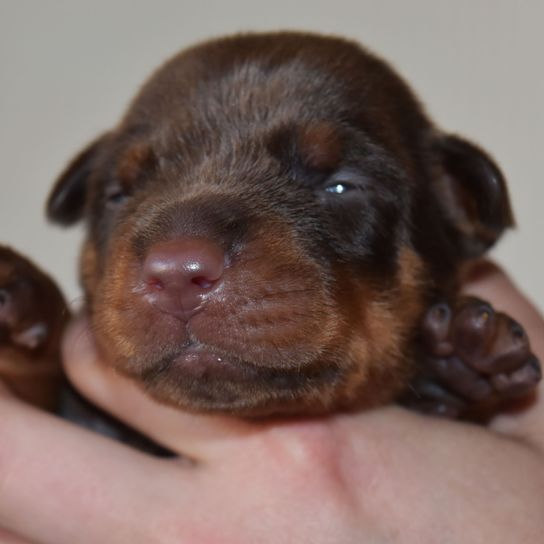
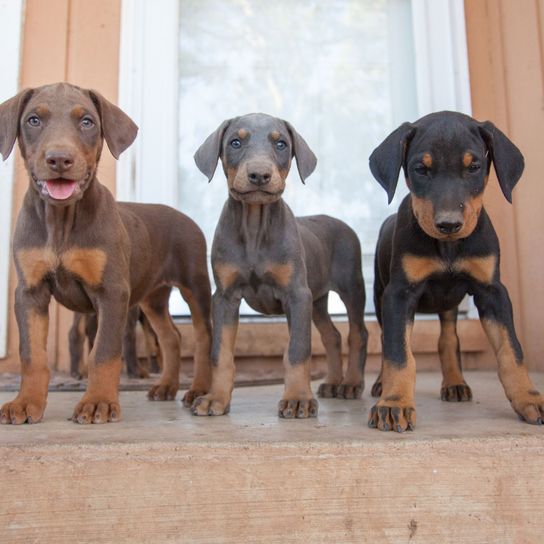
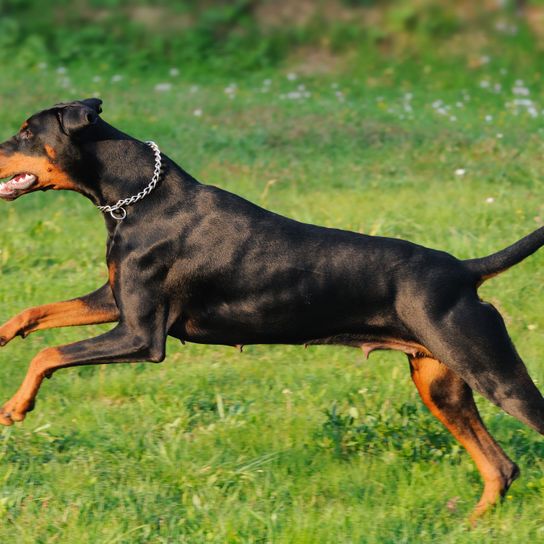
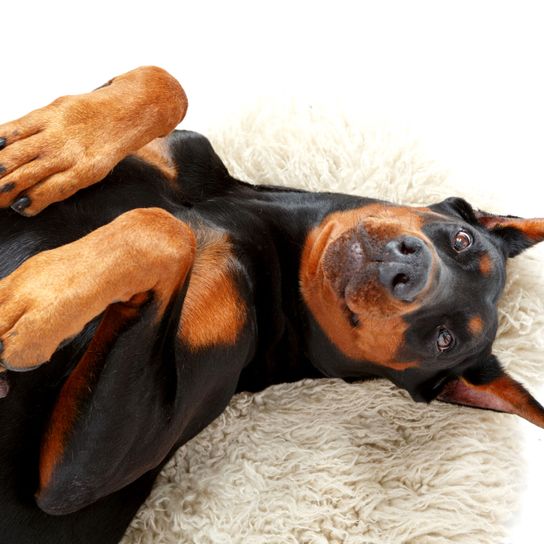
| Alternate Name | Doberman Pinscher |
| Origin | Germany |
| Life expectancy | 10 - 13 years |
| Care requirements | low-maintenance |
| Activity level | average |
| FCI group | Pinscher and Schnauzer type |
| AKC group | Herding Group |
| KC group | Pastoral Group |
Doberman mixes
Attitude, character and temperament of the breed
Typical character traits of the Doberman
The alertness as well as the temperament has remained in the Doberman, which requires consistent leadership. He can quickly become protective if the owner is unsure. Nevertheless, he is basically peaceful, as the breed standard calls for only a medium temperament and sharpness. A low threshold of irritability is not allowed in serious breeding.
In the family the friendly Doberman shows itself very affectionate. He has a good leadership and working joy, so that the education should not be difficult in principle. The only thing that needs to be taken care of is the performance and toughness, which give him self-confidence and fearlessness. As with training any dog, Doberman or not, you should use positive reinforcement.
Character
Usage
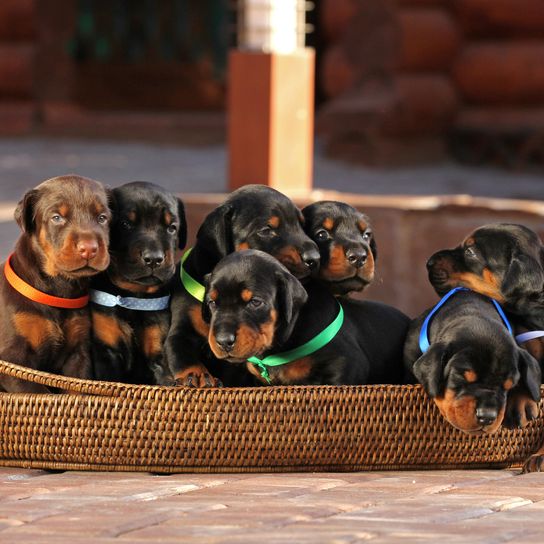
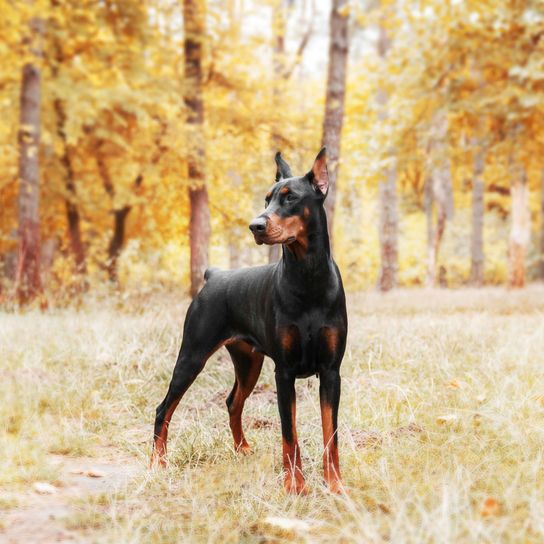
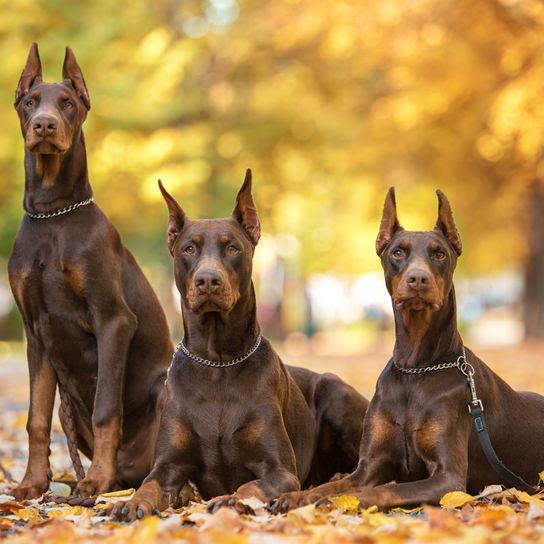
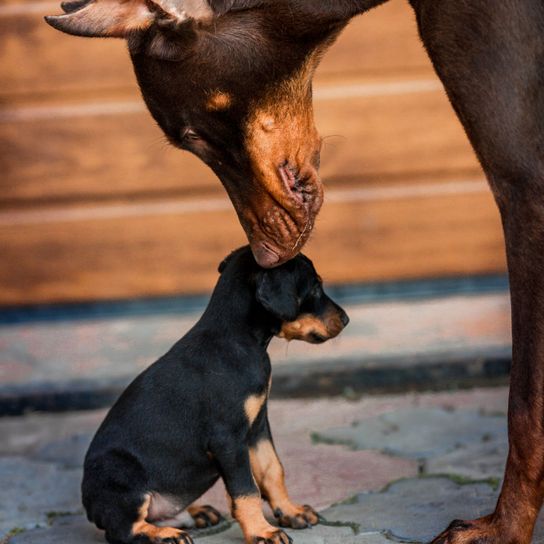
Breed-typical diseases of the Doberman.
A very large percentage of Dobermans, more than in other dog breeds, suffer from dilated cardiomyopathy (DCM), also referred to as Doberman cardiomyopathy. In summary, pay particular attention to the following diseases:
- Doberman Cardiomyopathy
- Dancing Dobermann Disease
- Wobbler Syndrome
- Blue Dobermann Syndrome
- Hip joint dysplasia
- Hypothyroidism
- Congenital Vestibular Syndrome
If you buy a dog from a reputable breeder, the parents have automatically been tested for Von Willebrand disease. However, check with the particular breeder to be sure about this.
Life expectancy
A Doberman has an average life expectancy of 10 to 12 years. Since it has an athletic shape despite its size, especially compared to bulkier breeds like the Rottweiler, it can definitely live to be older.
Breeding and buying a Doberman
If you want to buy a Doberman, expect to pay up to 1,200 Euros for a healthy puppy with papers. You can recognize a good Doberman breeding by the loving and species-appropriate handling of the animals and sensibly planned litters instead of pure mass reproduction. It is best to have the parents shown to you. Even if all Doberman puppies appear peaceful and sweet at first, unfavorable behaviors may show up at a later age due to heredity.
If you want to rescue a Doberman, check your local animal shelter. In addition, Germany-wide shelters that cater exclusively to Pinschers and the Doberman offer grateful secondhand dogs.

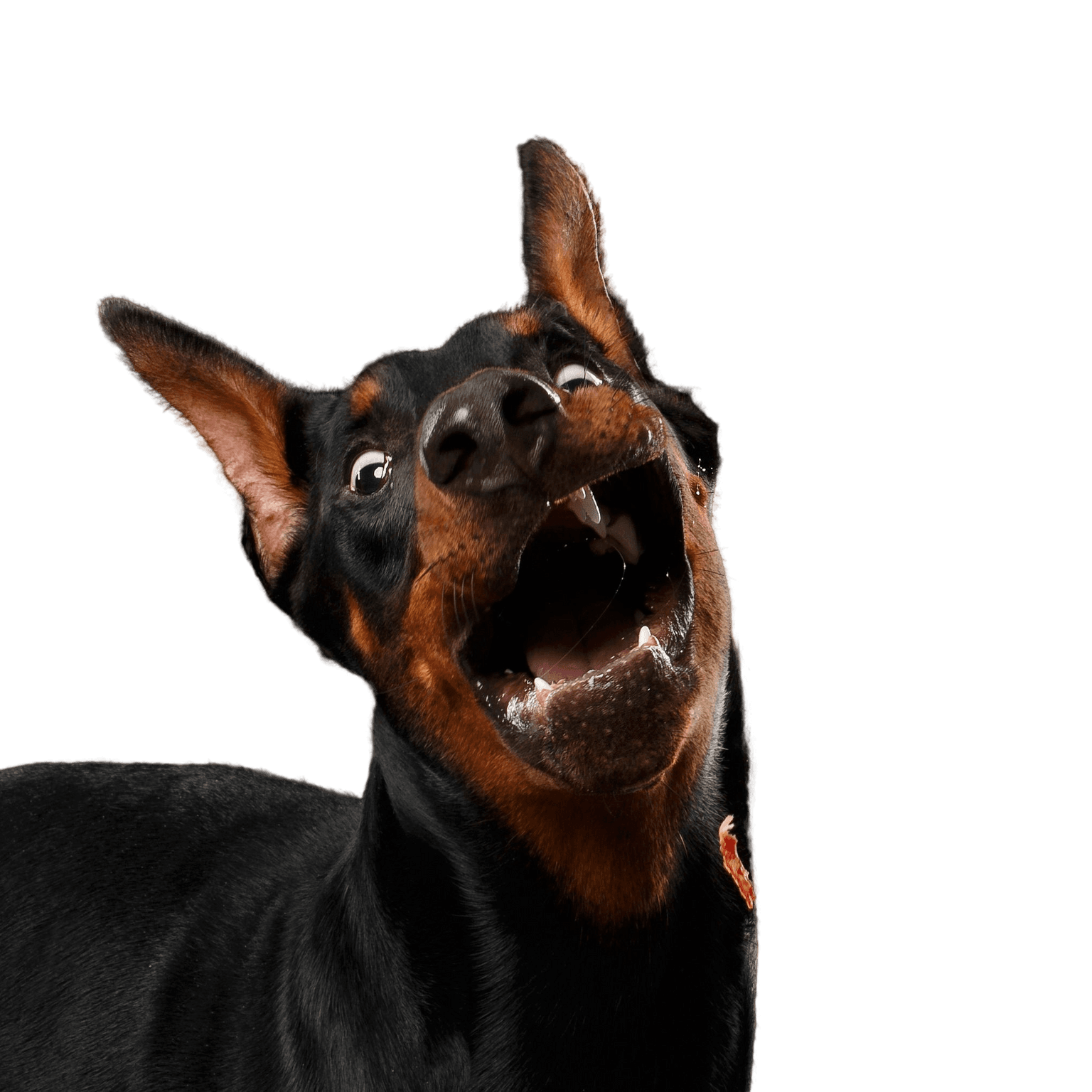
Breed characteristics of the Doberman
The FCI divides the Doberman into Group 2 (Pinscher and Schnauzer, Molosser and Swiss Mountain and Cattle Dogs), Section 1 (Pinscher and Schnauzer). The breed standard requires a working test.
The Doberman is usually a strong and muscularly built dog with a height of 68-72cm in males and 63-68cm in females, showing elegance and nobility despite all substance in the lines of the body. At the same time he brings a weight between 32kg and 45kg on the scales.
The gait
The Doberman has an elastic, elegant and agile gait, which is of particular importance for both performance and conformation. The forelegs swing forward as far as possible, while the hindquarters are long reaching and springy to produce the necessary thrust.
The head
The powerful head of the Doberman, whose muscles should be well developed, corresponds to a blunt wedge when viewed from above. Viewed from the front and above, the sides of the head should not appear protruding (cheeky).
Both the transverse and parietal lines should be straight, but the latter slopes to the nape of the neck over an inconspicuous occipital bone in a slight curve. In the other direction, the frontal furrow is visible and the following frontal stop is slightly but recognizably developed. The superciliary arches are well developed without being prominent. The slight lateral arch of the upper jaw and the zygomatic bones must be in harmony with the overall length of the head.
The muzzle
The nasal tip of the Doberman is well developed and more broad than round. The black (or in brown specimens with a lighter tint) nose leather has large openings to provide optimum respiratory support.
The strongly developed muzzle itself must be in correct proportion to the top of the head and is deep, the oral fissure should reach far to the molars. It has firm lips, which lie smoothly against the jaws and ensure a tight closure of the oral fissure. Dark pigmentation is basically required, with brown Dobermans slightly lighter in shade. This dog breed has a strongly developed scissor bite.
The eyes & ears
They are medium sized, oval and dark in color. In brown dogs, a slightly lighter shade is allowed. According to the breed standard, Dobermans have well fitting eyelids, the rim of which is hairy.
The natural ears are set to the side at the highest point of the top of the head and ideally rest against the cheeks.
The rump
The upright carried neck is dry and muscular and its lines ascending as well as pleasingly curved. Further, the withers should be prominent in height and length, especially in males, thus giving the topline its rising course from the croup.
The short, firm back is well muscled, as are the loins. and the croup. Bitches may be slightly longer in the loin, as they need room for the mammary. The croup should slope slightly from the sacrum towards the base of the tail, barely perceptible.
The depth of the chest should be approximately half the height at the withers with slightly arched ribs and of good width, particularly pronounced towards the front (forechest). The lower profile line is clearly raised from the end of the sternum to the pelvis the abdominal wall.
The tail
The tail remains natural and is ideally carried in a slight upward curve.
The forequarters
The forelegs, seen from all sides, are almost straight, i.e. perpendicular to the ground, and are strongly developed.
The shoulder blade lies firmly against the rib cage, is well muscled on both sides of the shoulder blade bone and projects above the spinous processes of the thoracic angles. It is as oblique as possible and well laid back, so that the angle to the horizontal is about 50°. The well muscled upper arm continues into a close fitting elbow and a strong and straight forearm. The following front tarsal joint is strong, as well as the front metatarsus, which is straight when seen from the front and only an indicated slant when seen from the side. The paws with black nails are short and closed and the toes arched upwards (cat feet).
The hindquarters
Viewed from behind, the Doberman appears broad and rounded due to its pronounced pelvic muscles in the hips and croup. The muscles running from the pelvis to the upper and lower thighs result in a good width development also in the thigh area, the knee area and the lower thigh.
The strong hind legs are straight and stand parallel. The hip joint, which follows the strongly muscled thigh, has an angulation to the horizontal of about 80° - 85°. The stifle joint is characterized as strong, while the hock joint is said to be only moderately strong. The lower leg bones join the metatarsals at the hock joint. The hind metatarsus is short and is perpendicular to the ground.
The hind feet, like the front feet, have short, arched and closed toes with black nails.
The coat
The skin is tight all over, well pigmented and carries short, hard hair. It is evenly and densely distributed over the entire surface. Dobermans have no undercoat - so care should be taken not to freeze in very cold temperatures; a coat may be needed.
The Doberman is bred in two color varieties: Black or Brown with russet. Both are possible with sharply defined and clean branding. The blaze is on the muzzle, as a patch on the cheeks and above the eyebrow arches, and on the throat. There are also two spots on the chest, on the midfeet and paws, on the inner sides of the hind legs, on the anus and on the ischial tuberosity.
| Fur length | short |
| Fur | flat coated |
| Ear shape | Floppy Ear |
| Tail | lang |
| Anatomy | strong, sporty, square |
| Size ♀ | 61 - 68 cm |
| Weight ♀ | 40 - 45 kg |
| Size ♂ | 66 - 72 cm |
| Weight ♂ | 32 - 35 kg |
| Suitable For | - |
Colors
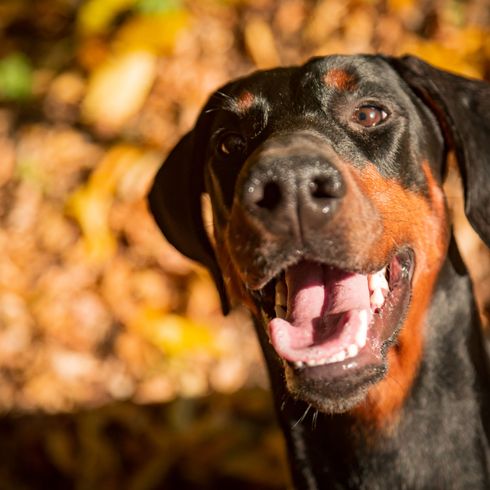
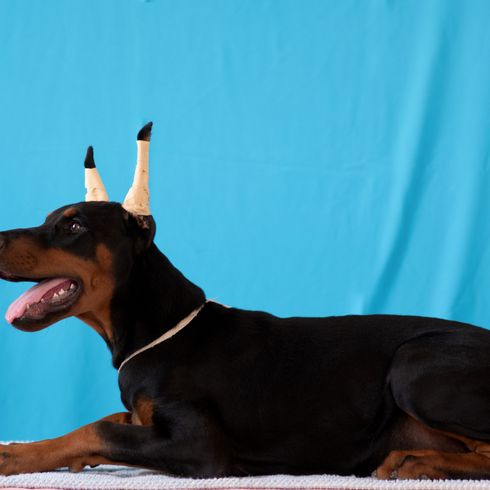
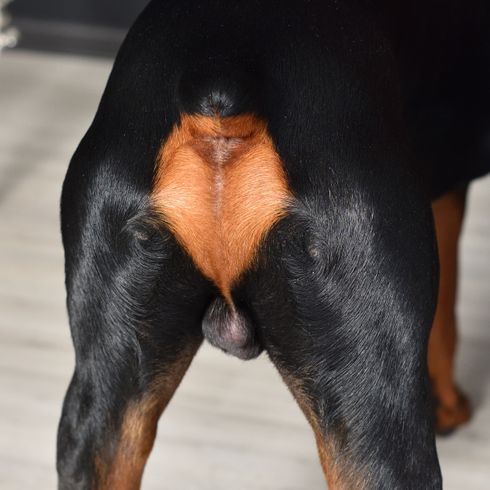
Known Diseases
Hypothyroidism
Hypothyroidism is a condition in dogs where the thyroid gland does not produce enough thyroid hormones. This can lead to a slowed metabolic rate, weight gain, fatigue, hair loss and other symptoms.
Hip dysplasia (HD)
Hip dysplasia (HD) is a genetic condition in dogs where the hip joint is not shaped properly. This leads to pain, stiffness and restricted movement.
Wobbler syndrome
In veterinary medicine, this is the name given to a complex of symptoms caused by nerve damage in the area of the spinal cord or spinal cord nerves in the area of the cervical spine.
Blue Doberman Syndrome
Blue Doberman Syndrome (Alopecia). This is a hereditary disease that leads to progressive hair loss.
Dancing Doberman Diseas
Initially, there is only bending of the legs, which is caused by muscle failure. In the advanced stage, the disease then leads to paralysis.
Ataxia
Ataxia (from Greek ἀταξία ataxia 'disorder' 'irregularity') is a generic term in medicine for various disorders of movement coordination. Ataxia can occur even when there is no paralysis (paresis), that is, when there is normal muscle strength.
Heart disease
Can occur frequently in dogs and can sometimes be treated with medication.
FAQ
-
It is not a fighting dog in principle, but sometimes it is called one because it is on the list in some countries.
-
The Doberman is not considered a "command recipient" and wants to decide for himself, so education is not so easy and you have to educate and train very lovingly and consistently. The Doberman is considered a listed dog in some federal states in Germany, Austria and Switzerland and is not to be classified as dangerous in principle.
-
A Doberman puppy costs about 2500 euros. Special colorings (which are not official colors) like blue or gray silver, cost much more.
-
Depending on education and training, the Doberman can also be a good family dog.
-
The Doberman is a breed of dog known for its protective and guarding abilities.
-
A Doberman usually reaches a height between 60 and 70 cm and weighs between 40 and 50 kg.
-
A Doberman has an average life expectancy of 10 to 12 years.
-
A Doberman can be dangerous if not properly trained and socialized. As with any dog breed, it is important to provide them with proper education and care to encourage their positive traits and avoid negative behaviors.
-
A Doberman should be trained early and consistently. Positive reinforcement training based on praise and rewards is an effective method. It is also important to socialize the dog and provide clear leadership and structure.









